Columns
The politics of emotional control
The polls have diverted the national attention away from some of the more pressing issues of political economy.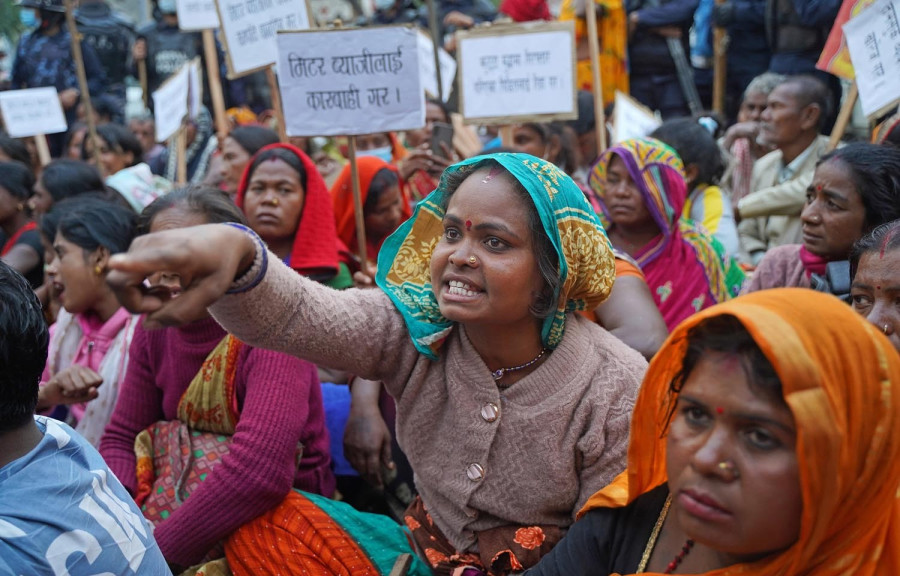
CK Lal
The just-concluded by-elections in Bara, Chitwan and Tanahun were all about show of strength by ambitious personalities. Once a political heavyweight, Upendra Yadav had lost his seat in the November 2022 parliamentary elections. Even if he scrapes through, the outcome of Bara-2 will re-establish his relevance in Madheshi politics.
The contest in Chitwan-2 was equally meaningless as voters were urged to vote for the same person that they had voted just a few months ago! After having been reprimanded for deception, Rabi Lamichhane had lost his berth in the cabinet, seat in Parliament and chair of the party that he had formed just before the General Elections 2022. In any country with a modicum of democratic culture, it would have taken someone like him quite a while to re-establish his political credentials. But Nepal being the country of gaidas, otherwise also known as rhinoceroses and proverbially famous for their thick skin, Lamichhane got his citizenship restored in a jiffy and jumped into the electoral fray without delay to reclaim his privileges. Nepali voters, being what they are, have rewarded his chutzpah handsomely.
The by-election in Tanahun-1 was no less pointless, but a bit more dramatic. The star attraction in the ring was Swarnim Wagle, an economist with an array of degrees from foreign universities and a track record of lucrative assignments in international agencies. Denied nomination by his staid old party, Wagle jumped ship at the last moment and filed candidacy from a new-born platform. Voters are sometimes mesmerised by the razzmatazz, and Wagle’s bet has worked wonders!
There was no political issue at stake in any of these contests. Their outcome is unlikely to affect the configuration of the ruling alliance for the moment. It will inflict little harm upon the opposition party. With no local, provincial or federal election scheduled in the near future, its results cannot be interpreted as a political bellwether.
All that the polls have done is divert the national attention away from some of the more pressing issues of political economy. The prolonged protests by the victims of loan sharks have been pushed into the background. The economic slowdown has stopped agitating technocrats. The crisis in the judiciary has lost its urgency. And the agitation over the politics of renaming the erstwhile Province No 1 as Koshi runs the risk of being smothered under the weight of ethnonational majoritarianism.
Unrecognised indigenousness
The permanent establishment of Nepal (PEON) appears to be jubilant that it had succeeded in teaching mainstream political parties a hard lesson. The White Shirts are euphoric that an avowedly anti-federal and openly Brahminical party has come up trumps. Ethnonationalists everywhere know that democracies can be made to crumble and turn into rubble through a demagogic mix of bread and circus.
The expected increase in remittances will continue to pay for the bread and rice. The Russians have already proposed to sell wheat and fertilisers. The Americans will continue keeping the urban bourgeoisie busy with democratic circuses and lofty pronouncements of liberal values. The Chinese will not stop supporting any effort to bring all frogs of Nepali communists together again in the same basket. The Hindutva lobby in New Delhi refuses to believe that Nepal has irrevocably become a federal, secular and democratic republic.
Though far low in proportion to their sufferings for centuries, Dalits have benefitted from provisions of inclusion maintained in the controversial constitution. Despite all efforts to sabotage successive agitations, the sacrifices of Madheshis got them at least a truncated province. Perhaps the silent losers of the democratic games were the Adivasis and Janajatis that were mobilised to counter Madhesh Uprisings and then left on the street to fend for themselves.
Unlike in most post-colonial countries, the idea of indigeneity goes unrecognised in South Asia. The zealots of indigenous Aryanism refuse to accept that whether it was an invasion or large scale migration, genetic analyses and linguistic studies have proved that early Aryans descended from the Central Asian steppes into Indus Valley, and subsequently pushed outwards in all directions in South Asia. The autochthonous Aryan arguments have given credence to the Brahminical worldview that four categories of “people” populated the ancient “Brahmavarta”, which was the original land of Aryans. In this four-tier hierarchy of inhabitants, the Sur, the Dev and the Yaksha were superhuman beings. Then came the Nara and Manav with their human qualities. The Banar and Kinnar were alternative and redeemable lower-Nara living at the edges of the Aryan civilisation. Brahminical texts identify Asur, Rakshas, Diatya and Danava as subhuman beings.
The Indian constitution lumps almost all categories of “native peoples, aboriginal peoples, first nations, adivasi, janajati, hunter-gatherers and hill tribals” as “scheduled tribes”. It denies them autonomy, right to self-rule and collective claim over land, water and forest resources. The republican constitution of Nepal has accepted the indigenousness of Adivasis and Janajatis, but nullified their claims of collective identity, regional autonomy and provincial self-rule.
Identity denied
The indifference of the Khas-Arya intelligentsia over the causes and consequences of martyrdom of Padam Limbu Lajehang proves the point that hegemonic nationality is antithetical to the idea of institutionalising diversities within a multinational state through autonomy and federalisation. The first Constituent Assembly had clearly set identity and capability as fundamental bases of federalisation. The second Constituent Assembly threw its resolutions in the dustbin and adopted a majoritarian statute through the fast track to give continuity to Khas-Arya hegemony. Madheshis saw through the design and tried to resist. But most Adivasis and Janajatis, with the exception of some Tharu groups, were taken in by the xenophobic warning of disintegration and jingoistic calls for unity in adversity.
The history of Sanskritisation—defined as a process of upward mobility where some social groups and tribes adopt customs of the dominant castes to acquire a higher status in society—among the tribal groups of the Mahabharat range dates back to ancient times. The Gorkhali rulers gave impetus to it through their Asali Hindusthana campaigns. The Hindu priests that fanned out with the Gorkhali forces often preached, coaxed and co-opted indigenous groups into the Hindu caste hierarchy.
Outside of the Newar nation, perhaps Gurungs were the first and the most “Hinduised” Adivasis. Their claims of autonomy have always been weak. Magars were some of the first sub-national groups to raise their voice for identity and autonomy, and were at the forefront of the Maoist insurgency right from the beginning. Whether deferred or dropped altogether, Magarat is now only a dream. Tharu awareness rose with the Maoist insurgency and Tharuhat-Tharuwan province appeared imminent until an all-party group of dominant castes banded together under the Akhand Sudurpaschim banner to confront the idea. The moment Limbuwan-Khambuwan contested the claims of Madheshis in the plains beyond the Koshi River, they lost the game of cultural recognition.
Adivasis and Janajatis are under four-fold pressure to forsake their distinctive identities. Hindutva zealots wish to “civilise” them through the sacred thread, pachgavya and Sanskrit education. Missionaries want to redeem them through conversion into Abrahamic religions. Globalists wish for their faster integration into the market mechanism. Nationalists have succeeded in snatching their right to a name their ancestral land. Naming is a political act that defines who controls a particular space and its people.




 5.4°C Kathmandu
5.4°C Kathmandu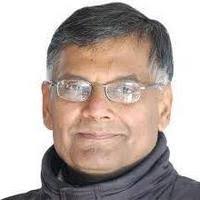


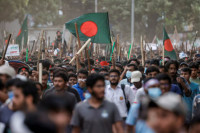
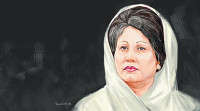
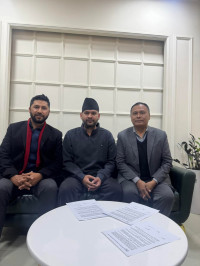





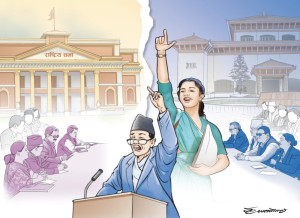


%20(1).jpg&w=300&height=200)

